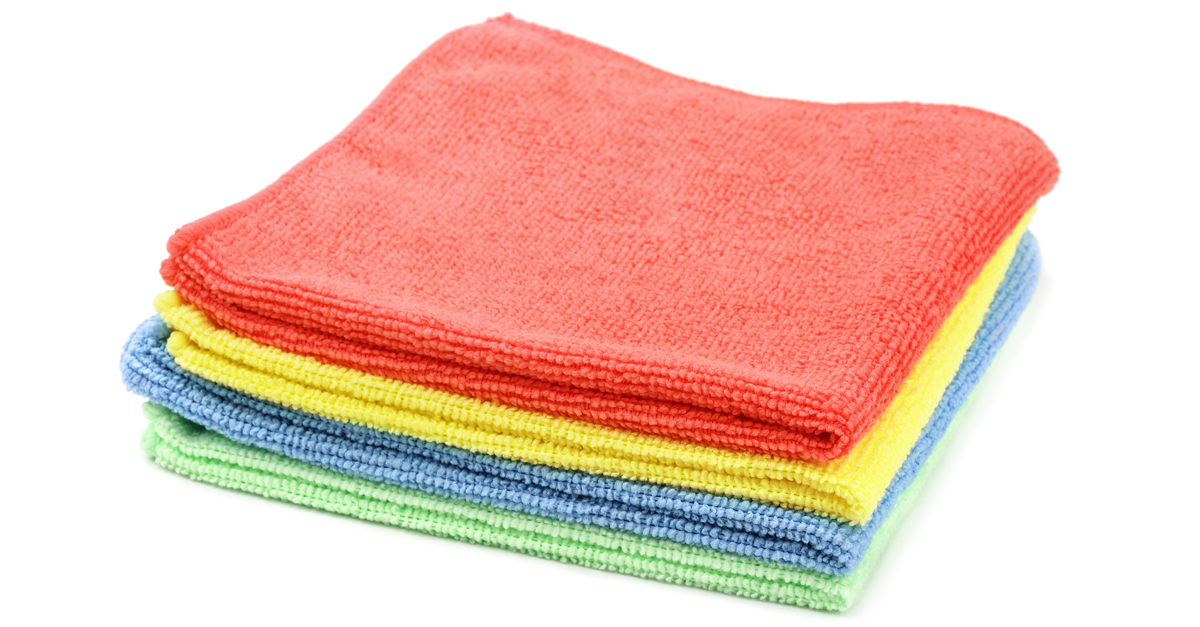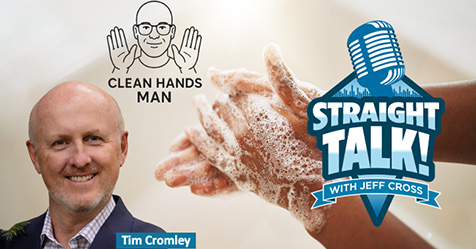Hospitals recognized the need to prevent cross-contamination early on. They were early adopters to microfiber flat-mopping systems because of their ability to help prevent nosocomial infections by reducing the risk of cross-contamination.
Instead of using one looped-end mop per three patient rooms, which was the standard, they began to use one flat mop per patient room, which eliminated the ability for pathogens to travel from room to room on the mop head itself.
Hospitals also adopted color coding early on to help prevent mistakes and cross-contamination. Using this practice with microfiber mops and towels not only helps to prevent cross-contamination in hospitals, but in nonmedical, nonfood service applications most of us encounter every day.
The Argument for Color Coding
First, why color code? Couldn’t we achieve the same goal of preventing cross-contamination by training custodial staff to change cloths and mops of any color when they finish cleaning the toilets and restroom floor, and then again when they finish cleaning the fixtures? Can’t we supervise them to make sure it happens?
Of course, and we should. Color coding isn’t a substitute for the proper training of custodians; it’s an integral part of that training. Color coding is an easy-to-remember-and-follow system that anybody can understand. It can be used to verify that your team is changing cleaning supplies during the appropriate times. It is also a sign to the public that you take stopping the spread of pathogens seriously and are purposeful in how you approach cleaning and sanitizing.
Incorporating Color Coding
Color coding is typically done as a combination of area and task. So, you may have certain colors that should only be used for certain tasks and other colors that are used for certain areas (see sidebar).
Virtually everybody who sells microfiber will at least carry towels in blue, green, yellow, and red. That’s pretty standard. Looped-end microfiber mops and microfiber flat mops are generally available in those four colors.
However, the keys to an effective color-coding program are training and consistency, not the colors themselves. It’s worth pointing out to your team that a blue cloth doesn’t clean better or worse than a green cloth of the same type. You may be amazed at how often people will interpret your telling them the red one is more effective for cleaning the toilet and the yellow one is more effective for cleaning the sink, because the fixtures have been coded to those particular colors. It’s important that the people doing the work understand why they’re color coding and how important it is to stop the spread of germs.
Alternative Options
Alternatively, there may be applications where disposable microfiber wipes and mop pads are preferable to laundering and reusing microfiber. “We catch those little suckers, and throw them out with the trash, where they belong,” says Jess Baidwan, custodial services division head, Southern Ute Indian Tribe, referring to pathogens.
“In our clinic environments, we have both medical and dental clinics on campus. The disposable microfiber system we use offers excellent infection prevention, good cleaning performance, and similar productivity to reusable microfiber.” However, he adds, “The downside is the higher cost of using a consumable product versus a durable one.”
Proper Handling and Transportation
Another consideration when using microfiber as part of a program to prevent cross-contamination is how you handle, transport, and store the clean and soiled microfiber. Here are a few ideas that might seem obvious, but are often overlooked:
- Store clean products appropriately. Keep clean towels and mop pads in plastic bags to prevent them from being contaminated after they’re laundered, but before they’re used. They should only be removed from their bag when they’re ready to be used or charged with cleaning or disinfecting solution.
- Have a designated spot for dirty microfiber. Store soiled microfiber in soil-designated laundry carts and laundry bags; never put clean textiles in those carts or bags. Make sure the carts and bags are sanitized regularly.
- Separate soiled microfiber from other products. Keep soil sorting areas separate from where you handle clean microfiber. Don’t use the same table for sorting that you use to fold freshly laundered cleaning cloths.
- Clean your equipment. It’s also important to sanitize your cleaning equipment. Sanitize custodial carts, caddies, mop handles, etc. regularly and take care to prevent contamination between sanitizations.
- Keep the storeroom or supply closet clean and organized.
When to Implement
If you’re not doing it already, start color coding now. Develop a process and document it. As you replace supplies, split the quantities into the four colors prescribed in this article, or whatever variation you feel is necessary for your facility.
Train your staff to understand why it’s an essential part of sanitization. Point out to them that it’s a clear indicator to the public that we take our jobs seriously and have a plan to prevent the transportation of germs from one area to another.
Remember that preventing cross-contamination means ensuring that all of the items we use to handle our supplies remain separated and sanitized. Help your team realize that they’re the first line of defense in keeping the public healthy.
A Guide to Color Coding
In the method below, which we adapted from the British Institute of Cleaning Science’s (BICSc) Colour Chart, let’s color code by a combination of both task and area to keep the process simple and effective:
- Red: Use this color on sanitary appliances, restroom floors, toilets, and urinals. Also use red-coded mops on restroom floors.
- Yellow: This color is appropriate for other restroom surfaces, including sinks, towel dispensers, hand dryers, soap dispensers, door handles, walls, etc.
- Green: Use green microfiber for general food and bar cleanup. Use green cloths and mops in non-preparatory food areas such as lunchrooms. An important note: Food prep areas have their own standards through the Hazard Analysis Critical Control Point (HACCP) system.
- Blue: Reserve this color for general low-risk areas, including common areas, offices, classrooms, etc.
There may be applications where you feel you need to incorporate even more colors than the four listed above. Every facility is different and has different needs.




